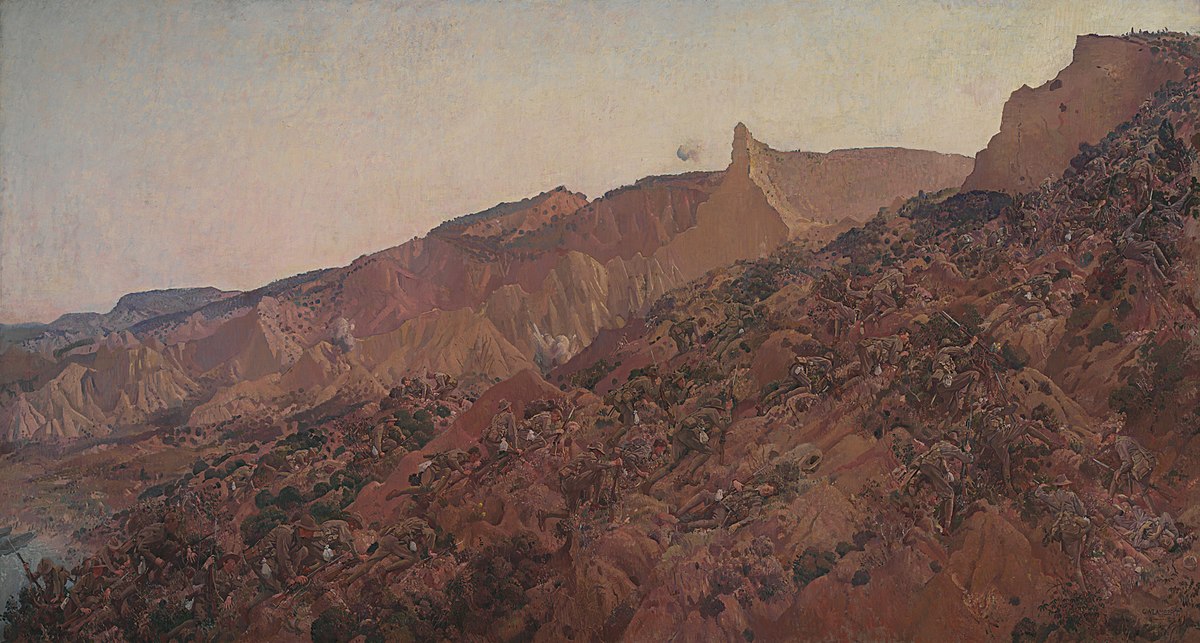
Early Battles
Cape Helles, Seddülbahir/EceabOn the afternoon of 27 April, the 19th Division, reinforced by six battalions from the 5th Division, counter-attacked the six Allied brigades at Anzac.[22] With the support of naval gunfire, the Allies held back the Ottomans throughout the night. The following day the British were joined by French troops transferred from Kum Kale on the Asiatic shore to the right of the line near 'S' Beach at Morto Bay. On 28 April, the Allies fought the First Battle of Krithia to capture the village.[23] Hunter-Weston made a plan which proved overly complex and was poorly communicated to the commanders in the field. The troops of the 29th Division were still exhausted and unnerved by the battles for the beaches and for Seddülbahir village, which was captured after much fighting on 26 April. The Ottoman defenders stopped the Allied advance halfway between the Helles headland and Krithia around 6:00 p.m., having inflicted 3,000 casualties.[24]
As Ottoman reinforcements arrived, the possibility of a swift Allied victory on the peninsula disappeared and the fighting at Helles and Anzac became a battle of attrition. On 30 April, the Royal Naval Division (Major General Archibald Paris) landed. The same day, Kemal, believing that the Allies were on the verge of defeat, began moving troops forward through Wire Gulley, near the 400 Plateau and Lone Pine. Eight battalions of reinforcements were dispatched from Istanbul a day later and that afternoon, Ottoman troops counter-attacked at Helles and Anzac. The Ottomans briefly broke through in the French sector but the attacks were repulsed by massed Allied machine-gun fire, which inflicted many casualties on the attackers.[25] The following night, Birdwood ordered the New Zealand and Australian Division to attack from Russell's Top and Quinn's Post towards Baby 700. The Australian 4th Infantry Brigade (Colonel John Monash), the New Zealand Infantry Brigade and Royal Marines from the Chatham Battalion took part in the attack. Covered by a naval and artillery barrage, the troops advanced a short distance during the night but got separated in the dark. The attackers came under massed small-arms fire from their exposed left flank and were repulsed, having suffered about 1,000 casualties.[26]
